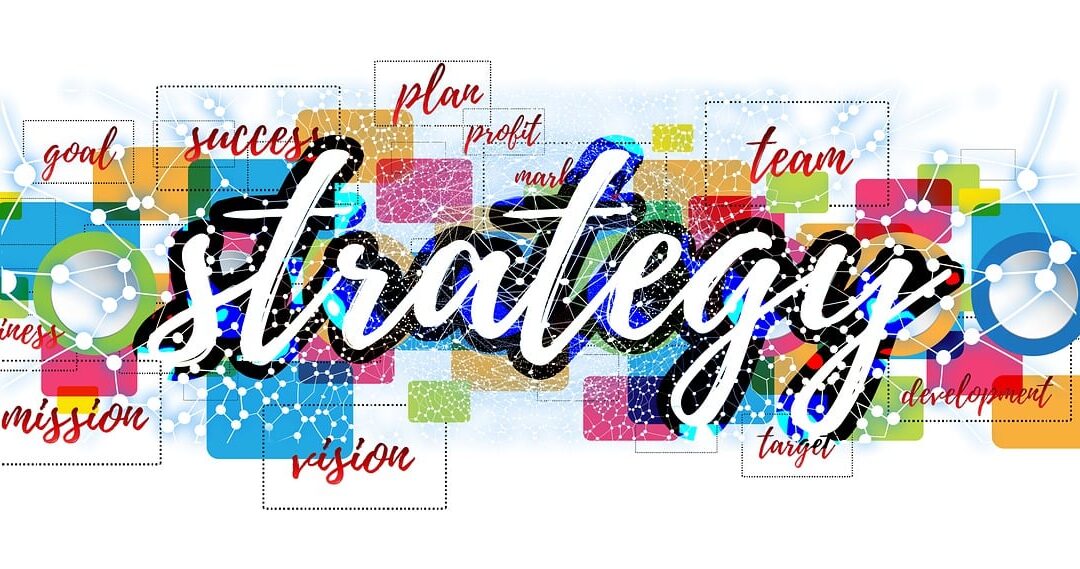
by Atiya Sheikh | Oct 24, 2025 | Board Members, Board Trustees, CEO, CFO, COO, CIO, Emerging Leaders, General Managers, Heads of Divisions, Junior Managers, Leadership Development, Managing Directors, News & Articles, Senior Managers
Incremental improvement is no longer enough. Let’s explore how leaders can reimagine value creation, embrace experimentation, and lead business model reinvention with clarity and courage.
The question every leadership team should be asking
If we had to start this business again today, would we build it the same way? For many leaders, the honest answer is no. Markets, technologies, and expectations have changed. Yet many organisations keep polishing yesterday’s model, hoping tomorrow will reward it. Incremental change feels safe. Exponential reinvention feels risky. But standing still is riskier still.
The illusion of progress
It is easy to look busy while falling behind. Upgrading systems, tweaking structures, launching add-ons — all signs of activity, not necessarily evolution. If your core way of creating value has not changed, you are not innovating; you are optimising the past. Reinvention begins when leaders ask,
“What business are we really in, and what business should we be in next?”
The signs it is time to rethink
Business model fatigue often shows up quietly:
- Margins erode despite rising sales.
- Decisions slow down.
- Teams protect the status quo instead of exploring what is possible.
When these patterns appear, it is time to reimagine, not just refine.
Reinvention is renewal, not disruption
Reinvention does not mean destroying what exists. It means rediscovering what gives your organisation life and extending it into the future. It could be shifting from ownership to access, from selling products to offering experiences, or from competition to collaboration. Whatever the form, it begins with curiosity.
The leadership challenge: creating space for possibility
Innovation rarely dies from lack of ideas; it dies from lack of permission.
Leaders set the tone. When every risk is punished, people play small.
When experimentation is valued, imagination returns.
Reinvention thrives where leaders replace certainty with curiosity.
A simple framework for renewal
- Identify where your model is under strain.
- Envision a future-fit approach to value creation.
- Pilot quickly, learn fast, adjust often.
- Build governance that rewards insight, not only outcomes.
This process turns reinvention into a disciplined practice rather than a desperate leap.
The human side of exponential growth
Behind every transformation is trust. People must believe that change builds on what they have achieved, not erases it. Leaders who honour the past while inviting the future create a sense of shared ownership. They communicate openly, involve teams in shaping the “how,” and celebrate learning, not just results. Because reinvention is powered by belief, not just capital.
A final reflection
Incremental change polishes what exists. Exponential change reimagines what is possible. Both have value, but only one prepares an organisation for the future. The leaders who will define the next decade are those who can balance stability with boldness.
Ask your leadership team,
“If we were starting again today, what would we do differently — and what stops us from doing it now?”
That single question could open the door to your organisation’s next chapter.
The Right Conversation Can Change Everything. Let’s Talk.

by Joy Maitland | Oct 24, 2025 | CEO, CFO, COO, CIO, Emerging Leaders, General Managers, Heads of Divisions, Human Resources (HR), Leadership Development, Managing Directors, Middle Managers
Work has changed, and so have people. Let’s explore how leaders can inspire commitment, prevent burnout, and create workplaces where purpose, performance, and well-being align.
The question leaders are asking quietly but urgently
Have we reached the point where working hard has stopped working?
Across organisations, teams are busy but drained. Engagement surveys speak of fatigue rather than fulfilment. Something deeper is shifting in how people experience work. The old equation — more effort equals more results — no longer adds up. We are being invited to rewrite it.
The end of the old contract
For years, the unwritten deal was clear: show up, perform, progress. Now people are asking different questions. Does this work still have meaning? Do I feel trusted? Is my contribution seen? Purpose, flexibility, and well-being have become expectations, not extras.
The reality of burnout: when purpose disappears
Burnout is not just about workload; it is about disconnection. It happens when effort feels endless but impact feels invisible. When people cannot see how their work connects to something meaningful, exhaustion follows. Leaders often treat burnout as an individual issue, but it is an organisational signal. The cure is not a mindfulness app. It is meaningful work.
The leadership reset: from control to connection
Modern leadership is less about managing activity and more about understanding energy.
The best leaders now ask,
- How do I help my team feel connected, not just informed?
- How do I balance empathy with accountability?
- How do I create space for rest without losing drive?
Connection builds trust, and trust sustains performance.
What people need from leaders now
- Clarity, so they can focus on what matters.
- Recognition, so their effort feels valued.
- Flexibility, so they can balance work and life.
- Purpose, so they can see meaning in what they do.
These are not soft ideas. They are strategic essentials for engagement and retention.
Building purpose-driven performance
Purpose and performance are partners, not opposites. Start meetings by reconnecting to purpose: “What impact are we creating this week?” End them by celebrating progress: “Where did we make a difference?” It is simple, and it changes the tone of work.
Leading through energy, not exhaustion
Energy management is now a leadership skill. Leaders who pace themselves create permission for others to do the same. Those who never rest send the message that exhaustion equals excellence. Sustainable performance depends on rhythm, not relentlessness. If your team’s calendar is full but their energy is low, it is time to pause, not push harder.
The new human equation
Work is no longer a transaction; it is a relationship. People give their best when they feel seen, valued, and purposeful. Leaders who understand this are redefining success. They create environments where ambition coexists with well-being, and where performance feels fulfilling, not draining.
Ask yourself,
“Are my people thriving because of our culture, or surviving in spite of it?”
Your answer will reveal how human your leadership really is.
The Right Conversation Can Change Everything. Let’s Talk.

by Joy Maitland | Oct 24, 2025 | Board Members, Board Trustees, CEO, CFO, COO, CIO, Emerging Leaders, General Managers, Heads of Divisions, Junior Managers, Leadership Development, Managing Directors, Middle Managers
From Strategy Drift to Strategy Sync
When strategies look good on paper but stall in practice, the issue is not planning but alignment. Let’s explore how leaders can keep their teams and energy moving in the same direction when the world refuses to stay still.
Let us be honest — strategy rarely fails in theory
Most leaders can explain where their organisation is going. The vision is clear, the documents are detailed, the language is polished. Yet somewhere between the retreat and reality, something slips. Decisions lose focus. Priorities blur. Teams start moving in slightly different directions. Not because people are careless, but because alignment — not ambition — is what keeps strategy alive.
The silent erosion called strategy drift
Strategy drift does not shout; it whispers. It shows up in small inconsistencies — projects launched without clarity, measures that reward the wrong behaviours, messages that change from meeting to meeting. You recognise it when teams begin to ask, “What are we really trying to achieve?” That quiet confusion marks the gap between what leaders say and what people experience.
Alignment is not control; it is coherence
When drift appears, the instinct is often to tighten control. More reports. More sign-offs. More meetings. But real alignment is not about control. It is about coherence — the shared sense of direction that makes every decision, big or small, feel connected to purpose. Alignment happens when the vision is clear, people know how their work contributes, and decisions reinforce the same priorities.
The leadership shift: from announcement to connection
In unpredictable environments, strategy cannot just be cascaded. It must be lived and adapted continuously.
Leaders who do this well:
- Simplify. Make strategy clear enough that anyone can explain it.
- Connect. Encourage open dialogue so teams interpret it consistently.
- Adapt. Revisit assumptions frequently; alignment is a rhythm, not an event.
When execution exposes the gaps
Ask your leadership team to list the organisation’s top three priorities. If the answers differ, alignment has drifted. Duplicated work, competing initiatives, or unclear metrics are not operational flaws — they are leadership signals that the story needs retelling.
The antidote: real conversations about purpose and trade-offs
Dashboards track performance, but conversations restore alignment. When people understand why something matters, they find ways to make it work.
Ask:
- Which priorities matter most right now?
- Where are we spreading ourselves too thin?
- What can we stop doing to focus on what counts?
Those questions rebuild clarity and commitment.
Keeping alignment alive
The most strategically aligned organisations are agile rather than rigid. They review assumptions regularly, reconnect teams to purpose, and adjust course without losing focus. To keep alignment alive, open leadership meetings with a brief “strategy pulse” — a quick check on what has changed and what remains true. Highlight and celebrate moments when teams make decisions that clearly reflect strategic intent. This simple rhythm strengthens organisational agility and reminds everyone that alignment is not an event but a continuous leadership discipline.
A final reflection
Every organisation has a strategy. The real question is whether it still has alignment.
Leaders who sustain alignment are sense-makers. They turn complexity into clarity and effort into movement. Before your next leadership meeting, pause and ask, “Does everyone here see the same destination, and are we still moving towards it?” If the answer is yes, your organisation is not just aligned — it is energised.
The Right Conversation Can Change Everything. Let’s Talk.

by Atiya Sheikh | Aug 12, 2025 | All Employees, Board Members, Board Trustees, CEO, CFO, COO, CIO, Emerging Leaders, Heads of Divisions, Human Resources (HR), Leadership Development
The Future-Ready Leader: AI, Market Trends, and Continuous Learning
(If you are waiting for a “perfect moment” to learn about AI, you are already behind)
Here is a leadership myth that needs to die:
“I will learn about that once things settle down.”
Spoiler: things will not settle down. The market will keep shifting. AI will keep accelerating. And your competitors will keep experimenting while you are “waiting for the right time.”
What the world’s movers are doing
Goldman Sachs is in its 20th year of the Vice President Leadership Acceleration Initiative (VPLAI) — a programme deliberately designed to grow leaders who can adapt to market shifts in real time. Continuous learning is not a side project. It is the operating system. (Goldman Sachs source)
The Economist highlights that trust and transparency are now as important in tech adoption as the tech itself — because you cannot lead people into a digital future if they do not trust your map.
McKinsey’s research shows that leaders who actively engage with new technologies and market trends are far more likely to translate change into growth rather than disruption. And Gallup’s leadership data is clear: leaders who role-model learning behaviours increase team engagement and innovation capacity by double digits.
If you want to be future-ready, stop “keeping up” and start “getting ahead.” Try this:
- Block “market hours” in your diary – Not for meetings, but for structured scanning of AI tools, competitor moves, and industry reports. Treat it as non-negotiable.
- Run live experiments – Pick one emerging tool or trend each quarter and pilot it in your team. The point is not perfection — it is building muscle for change.
- Make learning visible – Share what you are learning (and struggling with) in your leadership meetings. When leaders are learners, it normalises curiosity.
- Teach forward, not backward – Instead of endlessly reporting on last quarter’s performance, dedicate time each month to explore scenarios for the next two years.
The uncomfortable truth
If your leadership skills are not evolving as fast as the market, you are not leading — you are managing yesterday. The organisations that will win the next decade will be led by people who treat learning as a daily discipline, not an annual retreat topic.
So ask yourself: When my team looks at me, do they see someone preparing them for the future, or someone perfectly equipped for a world that no longer exists?
The Right Conversation Can Change Everything. Let’s Talk.

by Joy Maitland | Aug 12, 2025 | All Employees, Board Members, Board Trustees, CEO, CFO, COO, CIO, Emerging Leaders, General Managers, Heads of Divisions, Human Resources (HR)
Strategic Visibility: Turning Plans into Shared Roadmaps
(If your strategy only lives in the boardroom, you do not have a strategy — you have a secret)
Let me guess: somewhere in your organisation, there is a beautifully formatted strategy document sitting on a shared drive that only a handful of people have opened. And you think that is fine, because “not everyone needs to know everything.”
Here is the uncomfortable truth: when your plans are invisible to most of your people, you are not protecting them from overload. You are depriving them of alignment.
Gallup’s 2025 data makes the case in blunt numbers:
- Only 47% of employees strongly agree they know what is expected of them at work.
- Overall engagement is hovering at 32%.
(Gallup source)
And here is the kicker — when leaders communicate clearly, inspire confidence in the future, and share progress openly, 95% of employees fully trust them. (Gallup source)
Visibility is not just about ‘keeping people informed.’
It is about inviting them into the journey, not as passengers but as navigators. Because when people can see the route, they can adjust their own work to get you there faster.
Try these counter-intuitive visibility moves:
- Post the messy version – Share transformation drafts, not just the final polished roadmap. Let your teams see how strategy evolves and where they can shape it.
- Show the scoreboard – Create a living dashboard that updates in real time, visible to everyone, not just the C-suite.
- Name the risks – Publish the top three uncertainties you are facing. Watch how quickly people start solving them when they are not hidden.
- Shrink the updates – Instead of an annual “state of the nation” presentation, do a five-minute weekly progress video. Short, sharp, human.
Why most leaders resist this:
They fear that showing too much will cause distraction, dissent, or panic. The irony? The opposite is true. When people cannot see the plan, they make up their own — and those versions are rarely flattering or aligned with reality.
Your strategy should be like a shared map, not a locked safe. When every team member can see where you are heading, what has been achieved, and what is next, you get alignment without micromanagement, accountability without coercion, and trust without spin.
So, ask yourself: If I dropped into the break room today and asked any random person to explain our top three priorities, would I like the answer? If not, your roadmap might be beautiful — but it is still hidden.
The Right Conversation Can Change Everything. Let’s Talk.

by Joy Maitland | Aug 12, 2025 | All Employees, Board Members, Board Trustees, CEO, CFO, COO, CIO, Emerging Leaders, General Managers, Heads of Divisions, Human Resources (HR), News & Articles
Balancing Excellence with Sustainability
(Because “high performance” should not mean “high casualties”)
Here is the paradox no one in the boardroom wants to talk about:
Your relentless push for excellence might be the very thing eroding it.
We glorify high standards. We applaud the extra mile. We celebrate the hero who answers emails at 1:00 a.m. But excellence without sustainability is like running a Formula 1 car at top speed without ever changing the tyres — it looks impressive until it does not finish the race.
What the data says
McKinsey’s “Performance through People” research shows that the top-performing companies (“P + P Winners”) do not just demand results — they design systems where employee autonomy, clear challenge from leaders, and inclusive, supportive workplaces all coexist. This combination outperforms high-pressure, low-support environments on both revenue growth and retention.
Goldman Sachs offers an old-school example with a modern twist: their apprenticeship model couples intense performance expectations with coaching, mentoring, and long-term talent development. That mix keeps people sharp and standing.
The uncomfortable truth:
Many leaders think they are building excellence when, in fact, they are building exhaustion. Burnout is not a badge of honour — it is a business risk. The World Health Organization recognises burnout as an occupational phenomenon because it directly undermines performance, creativity, and health.
Three ways to rewrite the playbook:
- Bake recovery into delivery – Treat downtime as part of the performance cycle, not a guilty pleasure.
- Prioritise in public – Share openly what will not be done this quarter so teams know you mean it when you say “focus.”
- Share ownership of excellence – Stop making quality the responsibility of a handful of perfectionists. Train every team member to own standards — and make it safe to flag when those standards are at risk.
Why this matters more than you think
A culture that matches high standards with pacing, wellbeing, and scenario planning sends a signal: We win the long game. And that is where true competitive advantage lives.
The question to wrestle with: If your team sustained your current pace for the next 24 months, would you still have the same people — and the same quality — at the end of it? If you hesitate, your “excellence” might already be unsustainable.
The Right Conversation Can Change Everything. Let’s Talk.






